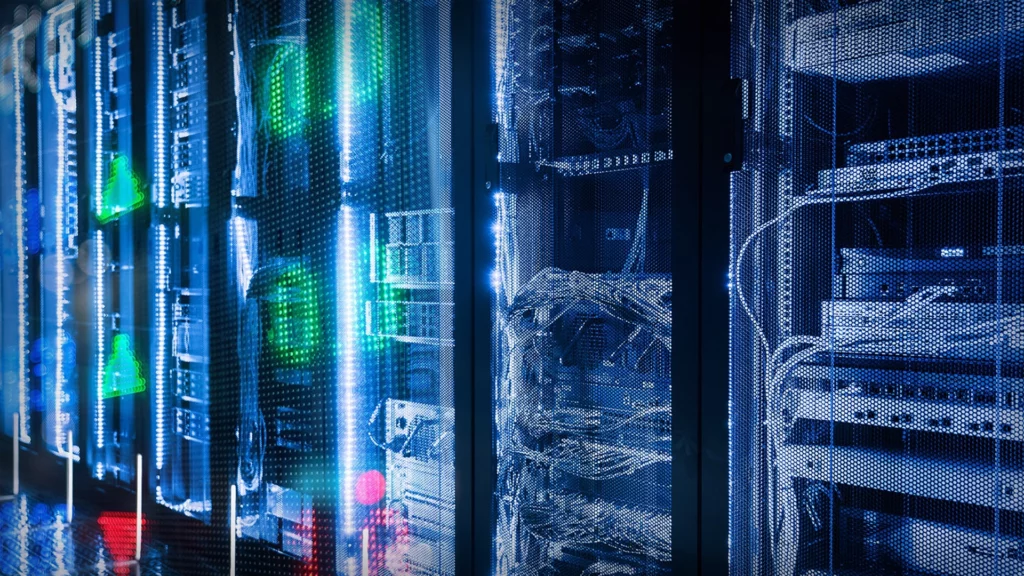AI-driven workloads demand massive computational power and generate vast amounts of sensitive data, making AI data centers prime targets for cyber threats. Traditional security models often fail to protect AI environments due to their unique traffic patterns, high East-West communication, and dynamic workload scaling.
In this post, we’ll explore the biggest security challenges in AI data centers and how Cisco, Juniper, and Palo Alto Networks provide solutions to protect AI infrastructure without sacrificing performance.
The Challenge: Security Risks in AI Data Centers
AI workloads introduce several security vulnerabilities:
- Lateral Movement Threats: AI clusters generate high East-West traffic, increasing the risk of lateral attacks if a single node is compromised.
- Data Poisoning & Model Theft: Attackers can manipulate AI training data or exfiltrate valuable AI models, disrupting business operations.
- Insider Threats & Unauthorized Access: Large-scale AI training often involves multiple teams and partners, making access control critical.
- Performance Impact of Traditional Security: Standard firewalls and IPS solutions often introduce latency, negatively affecting AI training and inference.
Real-World Example: AI-Driven Healthcare Firm Facing Security Challenges
A healthcare company using AI for medical diagnostics needed to protect sensitive patient data while maintaining high-speed AI model processing. Their traditional security appliances couldn’t handle the scale of AI workloads without introducing latency, slowing down medical research.
Cisco’s Solution: AI-Optimized Zero Trust Security with ACI & Tetration
To address these challenges, the firm deployed Cisco ACI (Application Centric Infrastructure) and Cisco Tetration for AI workload security.
Key Features & Benefits:
- Microsegmentation with Cisco ACI: Limited East-West attack surface by enforcing workload-specific security policies.
- AI-Driven Anomaly Detection (Tetration): Identified unauthorized access attempts and data exfiltration risks in real time.
- Encrypted Traffic Analytics (ETA): Inspected encrypted AI traffic for threats without breaking encryption.
With this deployment, the firm achieved zero trust security enforcement while maintaining sub-millisecond latency for AI model training.
Juniper’s Solution: AI-Driven Security with Mist AI & Juniper SRX Firewalls
A cloud service provider offering AI-as-a-Service needed real-time security monitoring without compromising AI job performance. Implementing Juniper Mist AI for Security and Juniper SRX Firewalls enabled:
Key Features & Benefits:
- AI-Powered Threat Detection: Used machine learning to identify and block AI-specific cyber threats.
- Scalable Inline Security for East-West Traffic: Juniper SRX firewalls provided high-speed inspection without bottlenecks.
- Dynamic Access Control: Adaptive policies automatically restricted access based on AI workload sensitivity.
Following deployment, security incident response times improved by 60%, and AI workloads remained uninterrupted.
Palo Alto Networks’ Solution: Zero Trust & Inline AI Traffic Security
A financial institution deploying AI for fraud detection needed to prevent unauthorized access and secure AI model training pipelines. They implemented Palo Alto Networks Prisma Cloud & PA-7000 Series Firewalls to secure their AI infrastructure.
Key Features & Benefits:
- Zero Trust Segmentation: Enforced least-privilege access policies for AI workloads.
- AI-Powered Threat Intelligence: Detected and blocked AI-targeted cyber threats in real time.
- DPI-Optimized AI Traffic Inspection: Ensured high-performance security without adding latency.
The bank successfully reduced AI-related security breaches by 70%, securing sensitive AI training data and models.
The Game Changer: Cisco’s AI Defense Platform
As AI-driven cyber threats grow in sophistication, Cisco’s AI Defense Platform is emerging as a game-changing solution for securing AI workloads. This advanced security framework integrates Cisco’s XDR (Extended Detection and Response), Talos threat intelligence, and AI-native security analytics to deliver:
- Proactive AI Threat Detection: Identifies malicious activity targeting AI models, such as adversarial attacks and data poisoning.
- End-to-End AI Workload Security: Secures AI pipelines from development to deployment, preventing unauthorized model tampering.
- Real-Time Incident Response: Uses AI-driven automation to rapidly mitigate security threats without manual intervention.
- Global Threat Intelligence: Leverages Cisco Talos to detect and neutralize emerging AI-specific cyber threats before they impact operations.
By integrating Cisco’s AI Defense Platform, organizations can proactively defend against AI-targeted cyberattacks while maintaining the high-speed performance required for AI training and inference workloads.
Conclusion
AI data centers face evolving security challenges that require next-generation protection strategies. Solutions from Cisco (ACI, Tetration & AI Defense Platform), Juniper (Mist AI & SRX Firewalls), and Palo Alto Networks (Prisma Cloud & Zero Trust Security) help organizations secure AI workloads while maintaining high performance.
How are you securing AI workloads in your data center? Share your insights in the comments!





